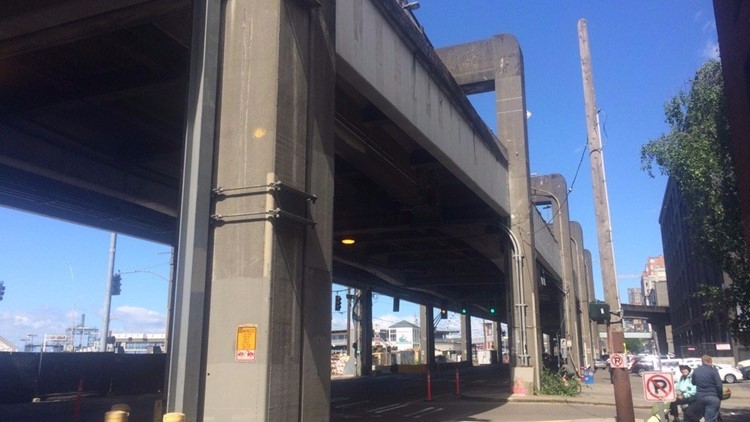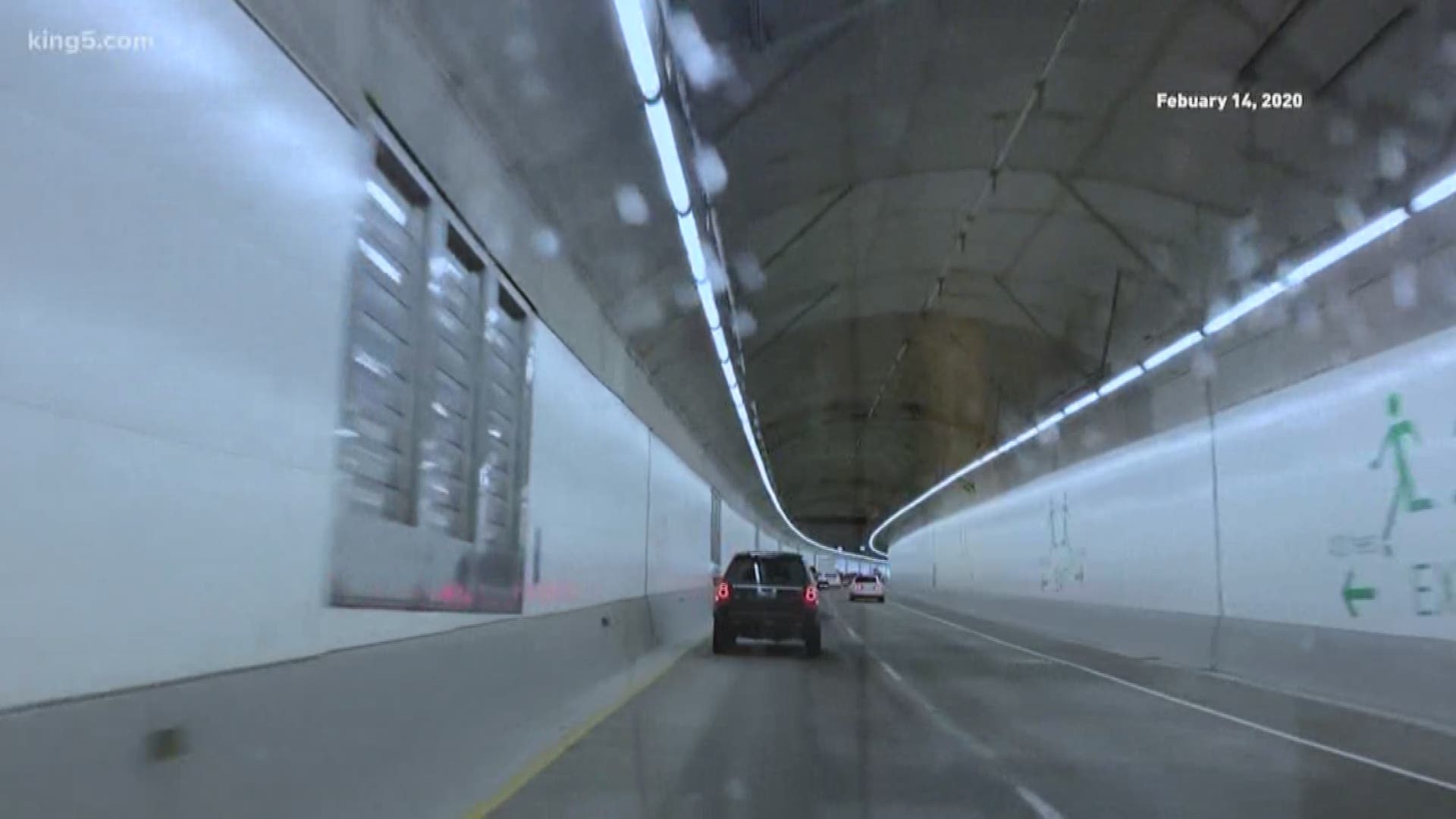A three-week closure of the Alaskan Way Viaduct is coming early 2019 so the Washington State Department of Transportation can reroute traffic into the new State Route 99 tunnel.
The closure, which begins January 11, will precede the opening of the tunnel, which officials hope will happen the week after a grand opening celebration of the tunnel Feb. 2-3, according to David Sowers, deputy program administrator of engineering and operations at WSDOT.
It’s the longest closure of the viaduct in Seattle’s history, according to WSDOT spokesperson Laura Newborn.
For approximately three weeks, SR 99 will be closed from the Battery Street Tunnel to South Spokane Street. On the north end of the project, you can enter and exit SR 99 at the Battery Street Tunnel’s Western Avenue entrance and exit. On the south end of the project, drivers can get on southbound SR 99 using East Marginal Way South or South Spokane Street.
The closure, which is weather dependent, will allow crews to realign ramps from SR 99 into the new tunnel. The closure is necessary because crews will build the ramps and road connections on the current roadway.
Sowers said WSDOT has built in some contingency into the three-week closure for poor weather concerns.
Getting around the SR 99 closure
Ramps on the south end will close earlier and open later in order to accommodate the large amount of work involved in the tunnel reroute. This means that ramps near stadiums will be closed anywhere from five to six weeks total.
The southbound SR 99 exit ramp to Atlantic Street and the northbound SR 99 on-ramp from South Royal Brougham Way will close January 4. The new northbound SR 99 exit to Alaskan Way at the south portal will remain closed for about one to two weeks after the tunnel opens.
If you’re traveling north on SR 99 after the Battery Street tunnel, lanes will narrow to one lane near Mercer Street so crews can build ramps at the tunnel’s north portal.
Once the closure ends, drivers will have direct access between the Seattle Center and the stadiums in SODO via the tunnel.
Traffic impacts
Even if you don't use SR 99, the project will have an impact across all major Seattle traffic routes. People who commute using SR 99 will be displaced across other routes, increasing the amount of traffic across other areas of Seattle.
To avoid traffic and contributing to the congestion during your commute, WSDOT recommends adjusting your travel time, using public transit such as light rail and the water taxi, joining a vanpool or vanshare, or working from home.
The water taxi plans to add an additional vessel during the closure to accommodate at least 149 additional passengers.
Twelve King County Metro routes that typically travel on the viaduct will also shift during the closure. See an updated route map here.
Period of maximum constraint
The SR 99 closure is part of what transportation engineers have called the "period of maximum constraint," where a multitude of traffic and construction projects will have an impact on congestion and travel times.
Downtown Seattle will be in a state of transition for the next five years as crews make improvements to transit and traffic flow and major construction projects are completed.
Here's some of the other major downtown projects that will impact commuters and visitors: the Washington State Convention Center expansion will be under construction through 2021, Rainier Tower 2 construction will continue into 2021, the waterfront revitalization project is slated to be completed in 2023, and in spring 2019 buses that use the transit tunnel will begin using surface streets to make the tunnel light rail only.
Join KING 5's Seattle Tunnel Traffic Facebook group to stay up-to-date on the latest Seattle tunnel and Viaduct news and get tips to battle traffic during the three-week Viaduct closure in January.




